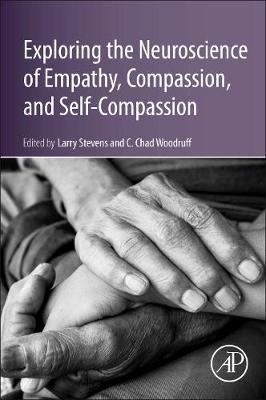
The Neuroscience of Empathy, Compassion, and Self-Compassion
Academic Press Inc (Verlag)
978-0-12-809837-0 (ISBN)
Larry Stevens' primary interests are in teaching and research in the broad sub-specialty of health psychology and behavioral medicine. He coordinates a very active undergraduate and graduate research program in the psychophysiology of altered states of consciousness, of compassion, of psychotherapy techniques, and particularly in clinical hypnosis. He uses electroencephalography (EEG) and EEG neuroimaging techniques to measure and to display brain changes from a variety of states of consciousness. Dr. Stevens is the principal investigator and program coordinator of the department's National Science Foundation (NSF)-sponsored summer undergraduate research internships into the Social Psychophysiology of Compassion. Each summer, he leads a team of faculty mentors and eight undergraduate interns from across the country in the conduct of social and psychophysiological research into the cortical, physiological, and psychosocial underpinnings of compassionate behavior. Research outcomes are presented each year at local, regional, and national (APA) conferences. Dr. Woodruff is a Social Neuroscientist whose research aims to elucidate the brain mechanisms underlying empathy, sympathy and compassion as well as religious belief. He uses electroencephalography (EEG) to measure various brain signals, investigating how these signals relate to social neuroscience topics. Much of his research focuses on an EEG signal believed to reflect the activity of mirror neurons. These are neurons that not only code the intentions of an individual, but also seem to reflect the intentions of those with whom the individual interacts. Among the most important findings in his laboratory is that putative mirror neuron activity has a complicated relationship with empathy in which the one’s empathic abilities increase with the ability of his/her mirror neuron systems ability to distinguish self from other (self-other discrimination). Dr. Woodruff maintains a vibrant lab, typically employing 10-15 students (graduate and undergraduate) who participate in all facets of the research process.
1. What Is This Feeling That I Have for Myself and for Others? Contemporary Perspectives on Empathy, Compassion, and Self-Compassion, and Their Absence 2. The Brain That Makes Us Concerned for Others: Toward a Neuroscience of Empathy 3. The Brain that Longs to Help Others: The Current Neuroscience of Compassion 4. The Brain That Longs to Help Itself: The Current Neuroscience of Self-Compassion 5. Sometimes I Get So Mad I Could …: The Neuroscience of Cruelty 6. Reflections of Others and of Self: The Mirror Neuron System’s Relationship to Empathy 7. Why does it feel so good to care for others, but only sometimes for myself? 8. Can We Change Our Mind About Caring for Others? The Neuroscience of Systematic Compassion Training 9. Compassion Training from an Early Buddhist Perspective: The Neurological Concomitants of the Brahmaviharas 10. The Language and Structure of Social Cognition: An Integrative Process of Becoming the Other 11. Where Caring for Self and Others’ Lives in the Brain, and How it can be Enhanced, and Diminished: Observations on the Neuroscience on Empathy, Compassion, and Self-Compassion
| Erscheinungsdatum | 05.09.2018 |
|---|---|
| Verlagsort | San Diego |
| Sprache | englisch |
| Maße | 152 x 229 mm |
| Gewicht | 660 g |
| Themenwelt | Geisteswissenschaften ► Psychologie ► Biopsychologie / Neurowissenschaften |
| ISBN-10 | 0-12-809837-6 / 0128098376 |
| ISBN-13 | 978-0-12-809837-0 / 9780128098370 |
| Zustand | Neuware |
| Haben Sie eine Frage zum Produkt? |
aus dem Bereich


